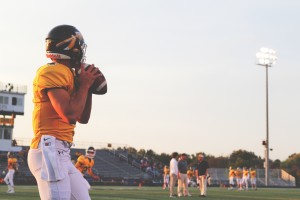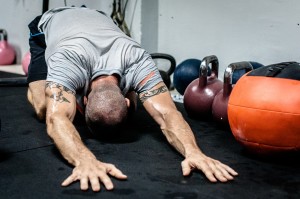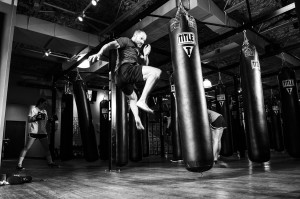How Do Football Players Work Out?
Football is an incredibly physical sport. Those playing at the top of the game all require specific diets and workouts for their position, ensuring that they’re in peak physical condition by the beginning of the season. However, all positions require strong athleticism and benefit from specific workouts. For any aspiring athletes hoping to play at the highest levels of competition, it’s important to know the basic form of a football workout.
For a football workout, the goal is pushing each area of the body to its upper limit — focusing on those most important on the field — through targeted workouts. Here is a basic overview of effective workouts for each area.
Upper Body Workout
For expanding one’s upper body strength, nothing beats pressing. A good upper body workout should include a combination of flat bench press, military press and inclined dumbbell press. Pressing is great, as it works out the most important muscles in the upper body: your pectoral, deltoid, and triceps.
Along with presses, a good upper body regimen should include sets, which are great for lower back strength. Finally, you’ll want shrugs for your upper back and neck. Varying between these exercises will help build your entire upper body and get you powered up on the field.
The upper body is of incredible importance during football workouts. It will determine much of your strength as well as your ability to throw and receive the ball. While some programs cut down on the strength training as the football season begins, it’s important to continue lifting, or you risk losing muscle mass. The structure of the workout itself can vary, depending on the position and level you’re training for.
Legs
Just as important as the upper body, a football player’s legs will be carrying them across the field, avoiding defense or making a beeline for the receiver. Speed and explosiveness are both determined by the strength of a player’s legs.
When you’re focusing on a leg workout, use a combination of leg curls, calf raises, squats and lunges. Curls will help build up your hamstrings, while calf raises help bulk up the calves, adding explosive power to your legs. Lunges, on the other hand, add muscle to the upper leg, which also adds explosiveness and will be necessary for sustained running across the field. Squats are great for both the back and legs, and they’re a great ingredient to the workout in general.
Speed/Agility
Football players do a lot of running, and while cardio is essential for anyone hoping to build endurance on the field, most of the running in football is composed of short distances at top speeds. The most important speed workouts should include sprints and shuttle runs, both of which will build your speed and agility over a medium distance. In football, games are determined by a matter of yards, and controlling speed within shorter distances makes the difference between mediocre athletes and the elite.
For building speed, do three to four sets of 40 and 60m sprints. Do a flat run throughout these sets, as they’ll help you maintain your baseline speed. Shuttle runs will require a quick turnaround, which will help build your agility as well. You can vary these exercises by running the 5-10-5, which will have you running in one direction and then another, improving your turnaround and directional snap.
When you’re working on acceleration — another important aspect of running during football — focus on the shorter distances. Complete two to three sets of 10 and 25m sprints, coming up to your top speed as fast as possible. This process will help condition your body to find peak velocity as soon as the ball snaps.
Your Workout
Formulating a weekly workout with all of these components — upper body strength, legs and speed/agility — will help you focus on the most important aspects of pro football athleticism. Your legs will be conditioned to explode into motion, flying over short distances past defenders or toward the ball. Your strength will allow you to sustain hits from defenders or push back the opposing line. Aim for these areas with your workout, and you’ll improve in no time.


